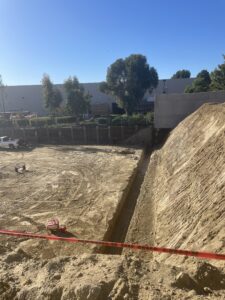 Mission of the EPA
Mission of the EPA
The Environmental Protection Agency (EPA) is an essential regulatory agency in the United States. It is dedicated to improving health and the environment of the public. Established in 1970, the EPA plays a crucial role in developing and enforcing regulations. The EPA also conducts research and educates the public on environmental issues. This is a brief overview of the EPA. Its mission and its notable achievements in preserving natural resources to promote sustainability.
It works towards improving health and the environment by developing and enforcing regulations. As well as conducting scientific research and providing grants and support to states. Doing so helps to promote sustainable practices. The EPA’s efforts encompass various environmental concerns, including air and water quality, hazardous waste management, and reducing greenhouse gas emissions.
Achievements of the EPA
Clean Air Act:
One of the EPA’s landmark achievements is the implementation and enforcement of the Clean Air Act. This legislation has significantly reduced air pollution across the country. Thus leading to improved air quality and better respiratory health for millions of Americans. The EPA has regulated emissions from industries, vehicles, and power plants. Doing so resulted in a substantial decrease in harmful pollutants such as particulate matter, ozone, and sulfur dioxide.
Clean Water Act:
The EPA plays a vital role in enforcing the Clean Water Act, which aims to protect and restore the nation’s water resources. Through this legislation, the EPA has set standards for water quality, regulated the discharge of pollutants into water bodies, and implemented programs to restore and protect wetlands and aquatic ecosystems. These efforts have improved water quality, making it safer for both human consumption and aquatic life.
Superfund Program:
The EPA manages the Superfund program, which focuses on the cleanup of hazardous waste sites across the country. By identifying and prioritizing contaminated sites, the EPA works to remediate these areas and mitigate potential risks to human health and the environment. The Superfund program has successfully cleaned up numerous polluted sites, restoring them to safe and productive use. With the aid of vapor mitigation, the remediation can ensure professionals have eliminated vapor hazards.
Energy Efficiency and Climate Action:
The EPA plays a crucial role in addressing climate change and promoting sustainable energy practices. Through the Clean Power Plan, the EPA aimed to reduce greenhouse gas emissions due to power plants. Although this initiative faced challenges, the EPA continues to support renewable energy development and energy efficiency programs. Also, the EPA focuses on the reduction of carbon emissions to combat climate change.
Environmental Education and Outreach:
The EPA actively promotes environmental education and outreach programs to raise awareness and inspire action. Through grants and partnerships, the EPA supports initiatives that educate communities, schools, and individuals on environmental issues. This helps to encourage sustainable behaviors and foster a sense of environmental responsibility.
 Challenges and Future Directions
Challenges and Future Directions
The Environmental Protection Agency faces various challenges in fulfilling its mission, including limited resources, changing political landscapes, and emerging environmental concerns. Climate change, pollution from emerging contaminants, and environmental justice are among the complex issues the EPA continues to address. Additionally, the EPA must adapt to new technologies and scientific advancements to effectively regulate and mitigate environmental risks. For the future the EPA is committed to addressing these challenges and promoting a sustainable future. It aims to strengthen environmental justice efforts, increase community engagement, and leverage technological innovations to enhance environmental management. The EPA also recognizes the importance of international collaboration in addressing global environmental challenges, such as climate change and the protection of biodiversity.
Closing thoughts
The Environmental Protection Agency plays a vital role to protect our environment and ensure the well-being of current and future generations. Through its regulatory efforts, research programs, and educational initiatives, the EPA has made significant achievements in improving air and water quality, cleaning up hazardous waste sites, and promoting sustainable practices. As environmental challenges persist and evolve, the EPA remains committed to its mission of safeguarding human health and the environment, working towards a more sustainable and resilient future for all.
|
ReplyForward
|
